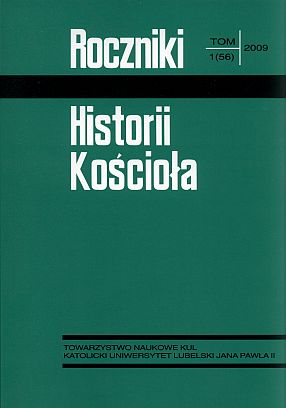KONWERSJA NA CHRZEŚCIJAŃSTWO PLEMION GERMAŃSKICH OD IV DO IX W.
CONVERSION OF THE GERMANIC PEOPLES TO CHRISTIANITY IN THE PERIOD BETWEEN THE FOURTH AND NINTH CENTURIES A.D.
Author(s): Dariusz KasprzakSubject(s): History
Published by: Katolicki Uniwersytet Lubelski Jana Pawła II - Wydział Teologii
Keywords: Conversion to Christianity; Conversion to Catholicism; Germanic peoples; 4th to 9th century; frankisation; Romanitas
Summary/Abstract: The process of assuming Christianity by those Germanic tribes that entered the western part of the Roman Empire began in the second half of the second century and lasted until the ninth. Their conversion to Christianity occurred in two stages. First, those peoples followed the Aryan kind of Christianity and later the Catholic one. The early missionaries to Germanic peoples were Christians who had been captured in Asia Minor. However, the most important Germanic mission emerged from the Germanic peoples themselves, i.e. from the Visigoths, who instilled Aryanism into their kinsfolk. During the fifth century, as Germanic tribes were settled within the Empire, they were romanized and eventually converted to Roman Catholicism. The Franks were the first numerous Germanic tribe to be converted to Catholicism from their native tribal religion in 498. Since then they began “frankisation” and conversion to Catholicism of the tribes they captured. The Catholic Church, deeply attached to the idea of Romanitas, was not interested in the conversion of Germanic tribes to Catholicism any more. Only after Gregory the Great (540-604) was elected Pope, a Catholic Benedictine mission was established among the Anglo-Saxon tribes. Parallel to that a mission of Irish monks came into being. The formal conversion of the Germanic tribes who entered Imperium Romanum Pars Occident to Catholicism resulted from the monastic activity on the one hand and the Church-State model of evangelization on the other.
Journal: Roczniki Historii Kościoła
- Issue Year: 2010
- Issue No: 2 (57)
- Page Range: 19-55
- Page Count: 36
- Language: Polish

